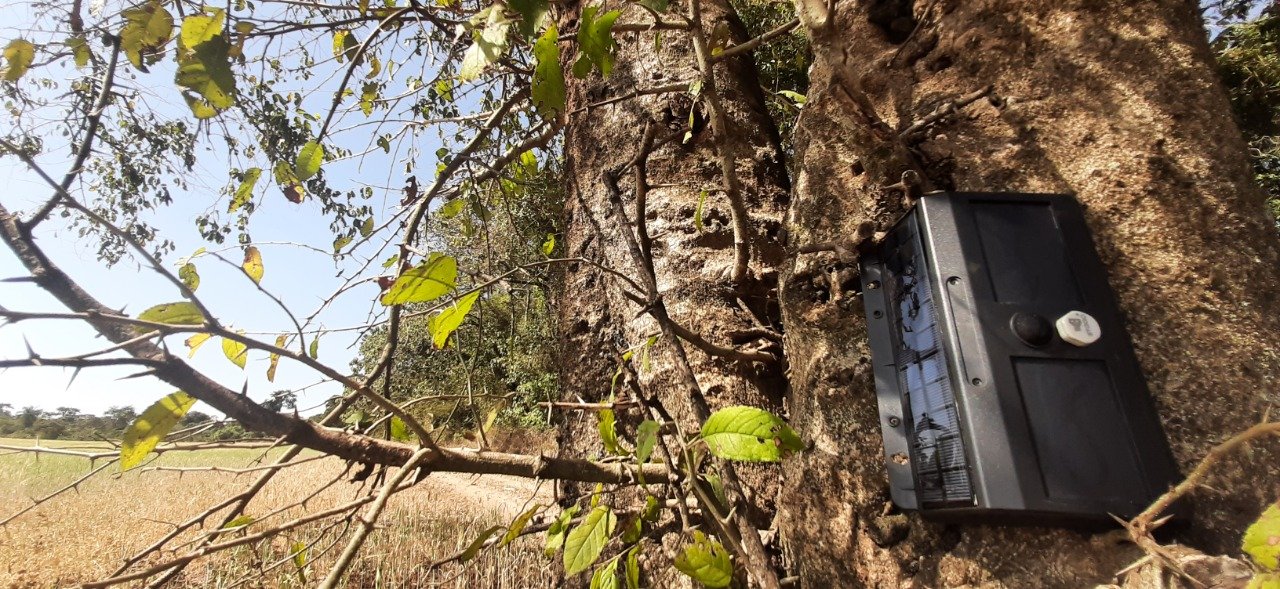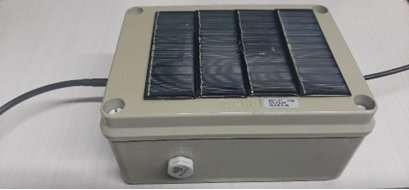Hearing the sounds of the forest
Selected in the 3rd cycle of the Sustainable Soy in the Cerrado Program, Green Bug's project uses acoustic monitoring to assess biodiversity in rural areas.
Green Bug captures the sounds of birds, insects and other animals, as well as the noise of chainsaws, cars or tractors, to monitor the audio of any farm and measure the results it records to recover landscapes. This project was selected for funding by the Startup Finance Facility during the 3rd cycle of the Sustainable Soy in the Cerrado Program – a partnership between the Land Innovation Fund and AgTech Garage, with strategic support from Embrapii (Brazilian Company for Industrial Research and Innovation) and the CPQD (Center for Research and Development in Telecommunications). Using the Internet of Things (IoT) and Artificial Intelligence (AI) to catalog the sounds, transmit the results to a database, and monitor any noise variations in the mapped area, the startup intends to detect changes in an ecosystem, anticipate possible needs for preventive actions, and measure the extent of good agricultural practices, helping to enhance production conditions and environmental conservation. With the PSSC's support, the company has already initiated its field work and collected more than 900 varieties of sound in the project's pilot unit in the state of Tocantins.
Founded by an electronic engineer with a professional career in multinational telecommunications companies, Green Bug emerged to meet the growing demand for tools to fight forest fires. "Our initial goal was to develop a fire-fighting drone. Either using chemicals or fighting fire with fire didn't suit or interest us, so we took another path: we developed an algorithm capable of predicting where there was risk of forest fire," explains Marcelo Vieira, CEO Founder of the startup. That reworking of the solution's scope was decisive for the startup: "We joined forces with Quiron (another startup from the PSSC portfolio) to create a solution for forest forecasts. Quiron does all the satellite-based predictions. What depends on field sensors and devices is up to Green Bug," adds Vieira.
Green Bug did not stop there. With a fire monitoring tool ready and successfully implemented in the market, their plans expanded to use the solution for other purposes as well – such as environmental preservation and landscape restoration. Thus, in addition to fire risk alerts, Green Bug enlarged the same tool's scope to measure rates of environmental degradation, deforestation, or loss of biodiversity on farms. "Participation in the Sustainable Soy in the Cerrado Program was like a megaphone for our project: with the financial contribution of the Startup Finance Facility and strategic support from all the PSSC partners, we will be able to invest in improving the solution and reach a far greater potential audience for our business," explains Marcelo.
Chosen in its early stages of development, Green Bug's project drew the attention of the PSSC selection committee for its uniqueness and potential for technological innovation by using a device hardly ever explored by the market – audio analysis. "With the Sustainable Soy in the Cerrado Program, we can identify projects with scale-up potential, such as Green Bug's, and stimulate the creation, development, and implementation of innovative solutions to address challenges facing agriculture in the 21st century," says Land Innovation Fund Director Carlos E. Quintela. "The Green Bug solution provides biodiversity and environmental risk indicators that are key to reducing deforestation, in line with the Fund's overall objectives and with those of the Program in particular," he added.
Created to offer 360º support to its participants, the Sustainable Soy in the Cerrado Program allows startups to connect and dialogue with researchers, entrepreneurs, and farmers, with support from private-sector mentors and experts throughout the experience, and a chance to apply for financial support to develop solutions. "As an innovation Hub, we genuinely believe in the potential of open innovation and connections with the right institutions and people to contribute to a more sustainable and competitive agribusiness chain. The Forest Ears project is one of the fruits of this innovation aimed at helping farmers, through technology and financial resources, to keep their soy production free of deforestation and monitor the benefits of preserving ecosystems for agricultural production and all its environmental impacts," says AgTech Garage co-founder and CEO José Tomé.
THE TOOL:
Green Bug's challenge is to develop a low cost, efficient device, with low energy or processing needs, and easy to handle in the field. "Our idea is to reach any farmer, in any scenario, and anywhere," explains the startup's CEO. Since joining the Cerrado Sustainable Soy Program, the initiative has won awards and market recognition. In October, Green Bug's project won first prize from the Brazilian Association of the Internet of Things 2022 (ABINC). In addition to the Startup Finance Facility's financial support, Embrapii and CPQD have teamed up with Sebrae to provide additional funding to develop the Green Bug device's artificial intelligence model.
"We will use CPQD's network of researchers and expertise to help the startup develop the tool," explains Fabricio Lira, Smart Agribusiness Manager at CPQD. "Green Bug's solution is a complementary approach to satellite monitoring and can generate valuable data for players throughout the chain interested in fighting deforestation and preserving biodiversity," he concludes.
Still in its initial development phase, Green Bug has already installed four audio recorders on a 25,000-hectare corn and soybean farm in the Cerrado biome, in the state of Tocantins. The sensors have already stored 900 hours of assorted sounds, which will be used to train the algorithm and to develop the system's artificial intelligence model. Once its baseline has been mapped and identified, the algorithm is ready to be installed in 30 devices and to start monitoring audio throughout the farm.
Unlike other audio capture devices available in the market, Green Bug's solution involves only one trip to the field for an initial analysis of the farm's characteristics and to deploy the device, with no need to return to collect the memory card. "We want to produce an audio ID for each region we monitor, detecting and classifying the forest's own sounds and transmitting only the results of that analysis," explains Marcelo. "This way we save money with the internet, facilitate connectivity, and reduce the need for memory in the device installed in the field," he adds.
The solution will enable an analysis of the general characteristics of the monitored region – its croplands, pastures, conservation units and permanent preservation areas – with short-, medium- and long-term information useful to farmers and, ultimately, also to the scientific community and private sector. The data will be collected by a solar and battery-powered electronic device with microcontrollers capable of running artificial intelligence algorithms, detecting and classifying events, transmitting the results to the web platform, and translating these sounds into numbers to map the dynamics of each micro-region, generating early warnings based on variations or anomalies.
HOW THE SOLUTION EVOLVED:
While at first Green Bug's solution focused only on identifying birds' songs, trips to the field and suggestions from the Sustainable Soy for the Cerrado Program helped the company realize that its tool could identify a broader range of sounds, from the corn plants being devoured by wild pigs to the movement of cars and machinery in unexpected areas of the farm. "We understood that identifying sounds can help not just the forests and animals, but people too," Marcelo explains.
The range of suggestions collected in rounds of conversation with the private sector included proposals like enhancing the device's functionality to create a library of audios for future identification; or using the equipment to measure temperatures, air quality, and relative humidity. "We have a huge project on our hands and still have no idea how big it will be. We know it goes far beyond birds. We want to continue exploring other sounds and opportunities," adds the entrepreneur.
BUSINESS MODEL:
Green Bug knows that it's not enough to create a tool for environmental monitoring and preservation. They also need to involve farmers and establish a value chain in which all players who contribute to an environment's conservation or restoration are winners. Among the business models envisaged by the startup are partnerships with banks and financial institutions interested in complying with international environmental standards, in exchange for offering special interest rates or extended terms for credit to farmers who can produce impact data favorable to environmental preservation. "We want to provide ways for farmers to gather enough data to claim payment for environmental services and receive financial incentives to keep the forest standing," concludes Marcelo.
SUSTAINABLE SOY FOR THE CERRADO PROGRAM:
There are twenty-one startups in the Sustainable Soy for the Cerrado Program (PSSC) portfolio. Based on a partnership between the innovation hub AgTech Garage and the Land Innovation Fund, with strategic support from Embrapii and the Center for Research and Development in Telecommunications (CPQD), the program includes participation by finalists in an Experience Day, with access to mentoring, connections with executives, knowledge sharing with entrepreneurs, access to thematic classes and technical-scientific support from a team of researchers selected for the Matopiba Fellowship Program, in addition to direct contact with ten farmers who are part of the For Farmers Program. During each cycle, upon analysis by an advisory board, outstanding startups can receive financial support from the Startup Finance Facility to develop their solutions.



